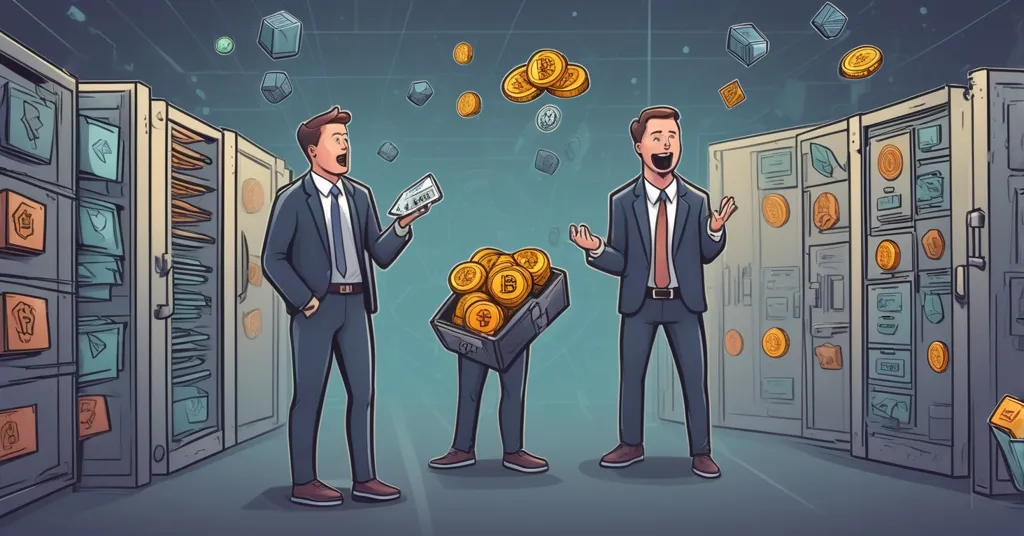Crypto Wallets: The Achilles’ Heel of Web3 – Urgent Need for Redesign

Web3 Won’t Scale Until Wallets Grow Up | Opinion
Are crypto wallets the Achilles’ heel of web3? JP Thor, the creator of Vultisig, argues that their poor user experience (UX) and outdated security models are significant barriers to mainstream adoption.
- Crypto wallets hinder web3 adoption with poor UX and outdated security.
- Seed phrases, or recovery phrases, are a weak link, pushing users to ETFs.
- Innovative solutions like threshold signatures exist but are underused.
- Wallet redesign is crucial for web3’s future.
Crypto wallets are meant to be the gateway to decentralized finance, giving users sovereign control over their assets. Yet, as Thor puts it, “Crypto wallets are supposed to be the bedrock of democratized finance—tools that give users direct, sovereign control over their assets. Instead, they often feel like juggling live grenades: unstable, unforgiving, and ready to collapse under the weight of a single mistake.” This harsh reality is driving potential users toward traditional financial instruments like ETFs, where they don’t have to navigate the complexities of wallet management.
The surge in crypto ETF inflows is a clear indicator of the UX problem with wallets. Investors are willing to pay management fees to avoid dealing with wallets, preferring the simplicity of traditional investments. Thor emphasizes, “Every last dollar should be on-chain, helping to back the growth of protocols, not lining the pockets of institutions. Crypto’s UX is so bad that users are willing to pay ETF management fees to avoid it.”
Recent wallet exploits further highlight these issues. For example, a $40 million bitcoin theft from a hardware wallet due to sophisticated social engineering attacks underscores the vulnerability of even hardware solutions. A hardware wallet is a physical device that stores private keys offline, supposedly offering enhanced security. Yet, even these can fall prey to phishing campaigns and browser vulnerabilities, illustrating the fragility of current security models.
Recovery phrases, or seed phrases, are a series of words used to restore access to crypto wallets. Managing these phrases with the precision of a cybersecurity expert is a significant weak link. Thor notes, “This is not merely inconvenient—it’s actively deterring potential users. As an industry, we need to intervene.”
The complexity of wallet interfaces, the burden of managing security measures, and the unforgiving nature of recovery processes are pushing users away. But there’s hope on the horizon with innovative solutions like threshold signatures, multi-party computation (MPC), and seedless recovery methods. Threshold signatures, for example, can be thought of as a safety deposit box requiring multiple keys to unlock assets, distributing the responsibility of key management and enhancing both security and usability.
Despite these promising technologies, wallet providers have been slow to adopt them. Amine Masmoudi explains that MPC and threshold signatures can distribute key management responsibilities, significantly improving the user experience. Yet, without widespread adoption, the systemic risk to web3 remains, eroding trust and driving potential adopters away. Thor’s call to action is clear: “We need to make wallets more user-centric, secure, and forgiving. Only then can we hope to fulfill the potential of web3.”
However, it’s not just about technical improvements. The crypto wallet industry faces ethical and governance challenges as well. Recent reports have linked Vultisig to North Korea’s Lazarus Group’s laundering activities, raising questions about the ethical and governance challenges within the industry. This adds another layer of complexity to the wallet redesign discussion, emphasizing the need for not only technical but also ethical improvements.
As we navigate these challenges, user education becomes paramount. Proactive cybersecurity measures, such as using multi-signature arrangements and avoiding public disclosure of crypto involvement, can help protect digital assets. By addressing both the technical and ethical aspects of wallet design, we can pave the way for a more inclusive and secure web3 ecosystem.
Looking to the future, upcoming trends and technologies could revolutionize wallet UX. From biometric authentication to more user-friendly interfaces, the potential for growth and improvement in the wallet space is immense. However, without a concerted effort from wallet providers to address these issues, web3’s promise of decentralized finance will remain out of reach for many. Discussions on platforms like Reddit highlight the user experience issues that need to be resolved. Additionally, Quora discussions offer insights into innovative solutions that could accelerate global cryptocurrency adoption.
Key Takeaways and Questions
- What are the main issues with current crypto wallets?
The main issues include outdated security models relying on seed phrases, complex and burdensome interfaces, and unforgiving recovery processes that deter mainstream adoption.
- Why do investors prefer ETFs over direct crypto ownership?
Investors prefer ETFs due to the poor user experience of crypto wallets, favoring the simplicity and familiarity of traditional financial instruments.
- What innovative solutions exist for improving wallet security and usability?
Innovative solutions include threshold signatures, multi-party computation, and seedless recovery methods, which offer more secure and user-friendly alternatives to seed phrases.
- How does poor wallet UX pose a systemic risk to web3?
Poor wallet UX erodes trust in the crypto ecosystem, driving potential adopters away and perpetuating the narrative that crypto is inherently unsafe and inaccessible.
- What is the author’s call to action for wallet providers?
The author urges wallet providers to adopt user-centric, secure, and forgiving designs to facilitate broader adoption and fulfill the potential of web3.
“Crypto wallets are supposed to be the bedrock of democratized finance—tools that give users direct, sovereign control over their assets. Instead, they often feel like juggling live grenades: unstable, unforgiving, and ready to collapse under the weight of a single mistake.” – JP Thor
“This is not merely inconvenient—it’s actively deterring potential users. As an industry, we need to intervene.” – JP Thor
“Every last dollar should be on-chain, helping to back the growth of protocols, not lining the pockets of institutions. Crypto’s UX is so bad that users are willing to pay ETF management fees to avoid it.” – JP Thor



